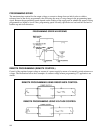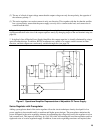
17
PRINCIPLES OF OPERATION
Electronic power supplies are defined as circuits which transform electrical input power--either ac or dc--into
output power--either ac or dc. This definition thus excludes power supplies based on rotating machine
principles and distinguishes power supplies from the more general category of electrical power sources which
derive electrical power from other energy forms (e. g., batteries, solar cells, fuel cells).
Electronic power supplies can be divided into four broad classifications:
(1) ac in, ac out-line regulators and frequency changers
(2) dc in, dc out-converters and dc regulators
(3) dc in, ac out-inverters
(4) ac in, dc out
This last category is by far the most common of the four and is generally the one referred to when speaking of a
"power supply". Most of this Handbook is devoted to ac in/dc out power supplies, although a brief description
of a dc-to-dc converter is presented later in this section.
Four basic outputs or modes or operation can be provided by dc output power supplies:
• Constant Voltage: The output voltage is maintained constant in spite of changes in load, line, or
temperature.
• Constant Current: The output current is maintained constant in spite of changes in load, line, or
temperature.
• Voltage Limit: Same as Constant Voltage except for less precise regulation characteristics.
• Current Limit: Similar to Constant Current except for less precise regulation.
As explained in this section, power supplies are designed to offer these outputs in various combinations for
different applications.
CONSTANT VOLTAGE POWER SUPPLY
An ideal constant voltage power supply would have zero output impedance at all frequencies. Thus, as shown in
Figure 1, the voltage would remain perfectly constant in spite of any changes in output current demanded by the
load.
Figure 1. Ideal Constant Voltage Power Supply Output Characteristic


















